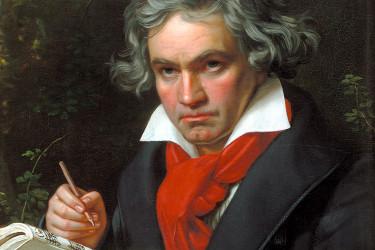
“Carol of the Bells” as we know it today was converted into a popular Christmas carol popularized by NBC Radio in 1922, but did you know it began its life as a Ukrainian folk tune? Remarkably, Ukrainians were actually involved all along the way in its journey from folk song to Christmas radio staple.
Around 1916, Oleksander Koshyts, the conductor of a major Ukrainian choir, commissioned Mykola Leontovych to produce a choral work based on traditional Ukrainian folksong. The song Leontovych chose, “Shchedryk,” was connected to the arrival of the New Year. Traditionally celebrated in April with the coming of Spring, New Year’s celebrations were eventually transplanted from April to January when Ukraine became Christianized and began celebrating the Julian New Year—the night of January 13–14 in the modern calendar. The songs for this occasion are known as Shchedrivky (the plural of Shchedryk).
Teenage girls in Ukrainian villages typically went from door to door singing these well-wishing tunes. Villagers showed their appreciation by rewarding the carolers with baked goods or other treats.
Written in 1916, Leontovych’s “Shchedryk” tells the story of a happy spring omen. A swallow flies into the house to herald a prosperous new year for the family—healthy livestock, money, and a beautiful wife. In Ukrainian, the word “Shchedryk” is derived from “shchedryj,” meaning “bountiful.” Leontovych borrowed just four notes from the original folk melody—the motive that became the opening melody of the piece. He then expands on this motive, harmonizing and developing it over the course of the piece.
During this time, Ukraine was in the midst of great political and social unrest as it was dragged into World War I. Ukrainian soldiers were initially divided, some fighting for Austria-Hungary and the Central Powers, while most served under the Russian Imperial Army. When Imperial Russia collapsed as a result of the Russian Revolution in 1917, the focus of the conflict shifted to the Ukrainian War of Independence, culminating in the brief formation of an independent Ukrainian government.
By 1919, Koshyts, the conductor who commissioned “Shchedryk,” began taking the piece on tour around the world with the Ukrainian National Chorus, promoting Ukrainian music and culture. The group performed over 1,000 concerts across Europe, North America, and South America.
On October 5, 1921, the Ukrainian National Chorus performed “Shchedryk” before a sold-out audience at Carnegie Hall. Peter J. Wilhousky, an American composer, music educator, and choral conductor of Ukrainian descent, attended the Carnegie Hall concert and wrote the English version of the lyrics, passing it along to NBC Radio in 1922. The rest, as they say, is history. Wilhousky continued to produce choral arrangements throughout his career, creating translations and arrangements of music from the Slavonic liturgy and a popular arrangement of “The Battle Hymn of the Republic,” all of which are still in use today. Wilhousky is also remembered for establishing the All City High School Chorus in 1936, a chorus of some 250 talented high schoolers from all five boroughs of New York.







